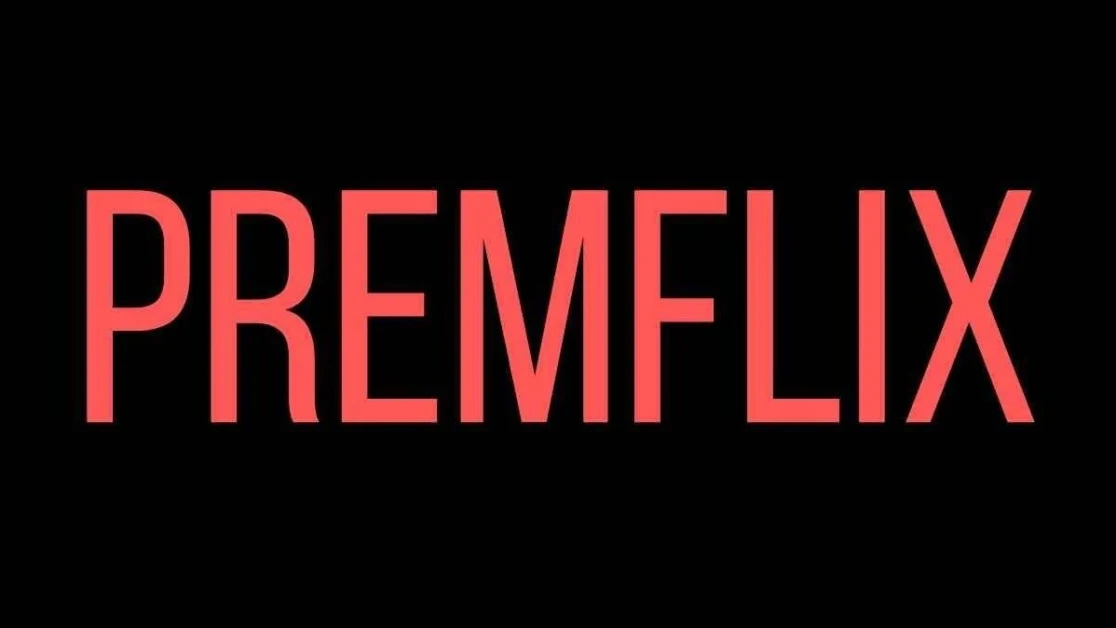
Your data guide to football betting, Dan Tracey shows you where the numbers point before the market catches up.
The Premier League Revolution Will Be Streamed
The Premier League has been nothing short of a sporting juggernaut these past three decades. A competition that has transformed how English football is viewed not only within its own borders but also around the world.
On any given weekend, eyeballs from Manchester to Manilla are locked on events at such stadiums as the Etihad and the Emirates and although this is genuine athletic drama, it is a soap opera that has viewers impatiently waiting for their next fix.
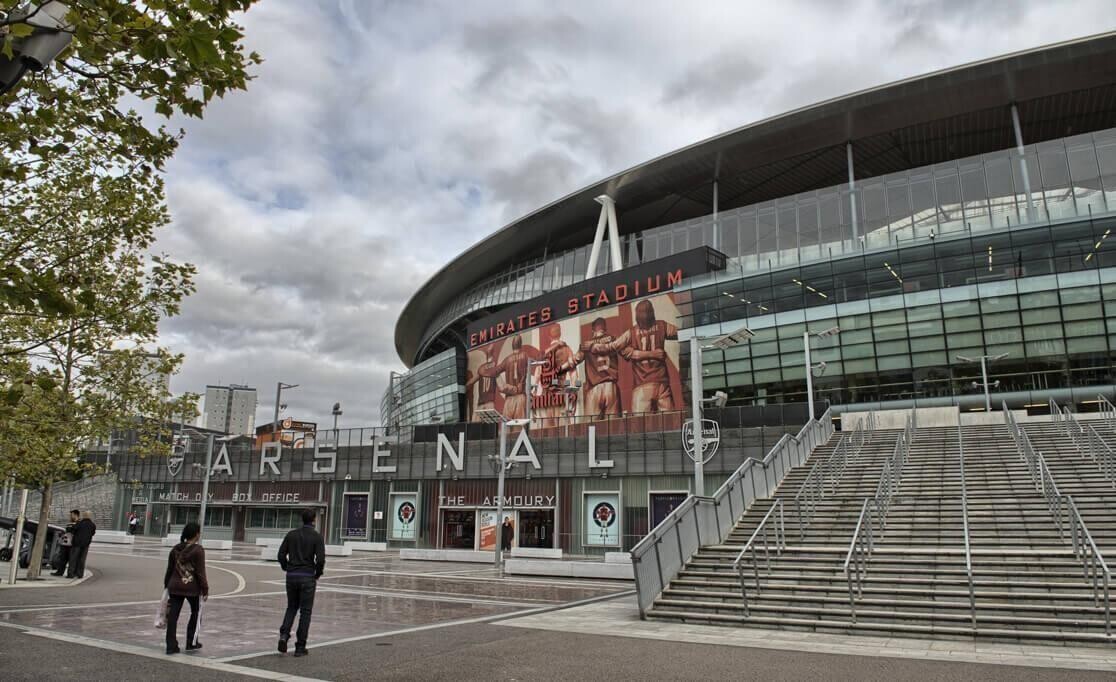
A global audience that follows the performance of 20 teams each season and with plotlines being cultivated at both the top and bottom ends of the table, the narrative is enough to keep worldwide supporters hooked.
Not only that, but this continual writing of football chapters has become the one product that all media giants want to get their hands on. Live sport is always a guaranteed ratings winner, there is no greater guarantee than the Premier League.
The creation of the league was always steeped in diverting more revenues to the clubs involved and the easiest way to create such a funnel is by looking at the history of broadcasting contracts since 1992.
| Period | Broadcaster | Year | Games Per Year | Total Games | Total Cost | Cost Per Game |
|---|---|---|---|---|---|---|
| 1992 to 1997 | Sky | 5 | 60 | 300 | £304,000,000 | £1,013,333 |
| 1997 to 2001 | Sky | 4 | 60 | 240 | £670,000,000 | £2,791,667 |
| 2001 to 2004 | Sky and NTL/Premiership Plus | 3 | 110 | 330 | £1,100,000,000 | £3,333,333 |
| 2004 to 2007 | Sky | 3 | 138 | 414 | £1,024,000,000 | £2,473,430 |
| 2007 to 2010 | Sky/Setanta | 3 | 138 | 414 | £1,706,000,000 | £4,120,773 |
| 2010 to 2013 | Sky/ESPN | 3 | 138 | 414 | £1,782,000,000 | £4,304,348 |
| 2013 to 2016 | Sky/BT | 3 | 154 | 462 | £3,018,000,000 | £6,532,468 |
| 2016 to 2019 | Sky/BT | 3 | 168 | 504 | £5,136,000,000 | £10,190,476 |
| 2019 to 2022 | Sky/BT/Amazon | 3 | 200 | 600 | £4,500,000,000 | £7,500,000 |
| 2022 to 2025 | Sky/BT/Amazon | 3 | 200 | 600 | £5,100,000,000 | £8,500,000 |
Although £304m was seen as an eye-watering sum when Sky snatched the first-ever set of Premier League rights in 1992, it can only pale into insignificance when you look at the most recent total contract cost between 2022 to 2025.
Of course, inflation will be part of the reason for such a steep rise, but another reason is that the Premier League is the lifeblood to both Sky and BT’s business model. Were they to lose this crown jewel, their bottom line could bottom out for good.
Then again, business is hardly booming for BT as it is. A merger with Discovery has taken place to keep their sporting portfolio afloat and soon, this new venture will see their channels rebranded as TNT instead.
While you can begin to understand why the soon-to-be former BT may be struggling to justify spending such large sums to show the Premier League on its channel, the current overall deal to show 200 matches across three platforms equates to £5.1bn.
From the beginning of the 2022/23 season to the end of the 2024/25, a combination of Sky, BT, and Amazon will show up as many as 600 matches on the UK television screens. A cost of £8.5m for each game.
Admittedly Sky pays the lion’s share of the deal, and this is due to them getting the bulk of the matches. They are permitted to show 128 per season under the current contract, BT have just 52 and Amazon bring up the slack with 20.
| Seasons | Sky | Others | Total | |||
|---|---|---|---|---|---|---|
| 1992–2001 | 60 | 60 | ||||
| 2001–2004 | 110 | 110 | ||||
| 2004–2007 | 138 | 138 | ||||
| 2007–2009 | 92 | Setanta | 46 | 138 | ||
| 2009–2010 | 92 | ESPN | 46 | 138 | ||
| 2010–2013 | 115 | ESPN | 23 | 138 | ||
| 2013–2016 | 116 | BT | 38 | 154 | ||
| 2016–2019 | 126 | 42 | 168 | |||
| 2019–2022 | 128 | 52 | Amazon | 20 | 200 |
Compared to the inaugural 1992/93 season, the Premier League now shows more than three times the number of matches per campaign. What was 60 has now ballooned into 200, and even at that figure, there is still the clamour for more.
With 380 matches being played per season, this currently means that any UK broadcaster does not pick up 180 games. The reason for this is the long-standing blackout rule that stops any live football being screened between 2:45 and 5:15.

If any broadcaster plans to show a game of any league during this window, the plug will soon be pulled by the authorities. It is a window that has been in place since the 1960’s, it is a window that many hope will soon be smashed.
The reason being is that although the UK broadcasters only show 200 games per season, a TV deal in another country is allowed to show all 380. You can watch every kick in Thailand, you cannot watch every kick in Telford.
Unless you have joined the pirate ship which is illegal streaming. With as many as five or six 3pm Premier League fixtures taking place each week, this currently means that 10 or 12 teams are not getting picked up by UK broadcasters.
It also means a substantial part of the domestic Premier League fanbase is unable to watch their team live unless they are able to get a ticket for the match itself and as we all know, the demand is far greater than the supply.
Therefore, those fans that miss out tend to find a less-than-reputable stream in the minutes before the game gets underway. The supporters get their weekly football fix, but the Premier League misses out on additional revenue.
Revenue that makes the competition what it is – whether for good or for bad, depending on your point of view but without that revenue, the ability to sell itself as the best league in the world would be severely diminished.
At the same time, there is an underlying feeling that maybe the Premier League’s powerbrokers have squeezed the maximum out of those broadcasters clamouring to show matches each season.
£5.1bn is not the highest ever overall figure that has been recouped and although it is £600m than the previous rights cycle between 2019 and 2022, it is still £36m less than the all-time high between 2016 to 2019.

A pre-covid world where Sky and BT’s arms race for legs on the field of play took the total to £5.136bn. Not only that, but there were less matches being put out for tender – this higher monetary figure only got you 168 matches per season.
The peak of Premier League rights were being sold for £10.1m per game. A peak that was never going to be scaled by the time the 2019 to 2022 cycle came about. Now the overall rights were down to £4.5bn and 40 more matches were on the table.
The league had to give more away to get less in return, something that is only going to hamper your business model and the only reason that the same deal was worth £600m more between 2022 and 2025 was to keep continuity during covid. Quite simply, nobody had the appetite for a bidding war.
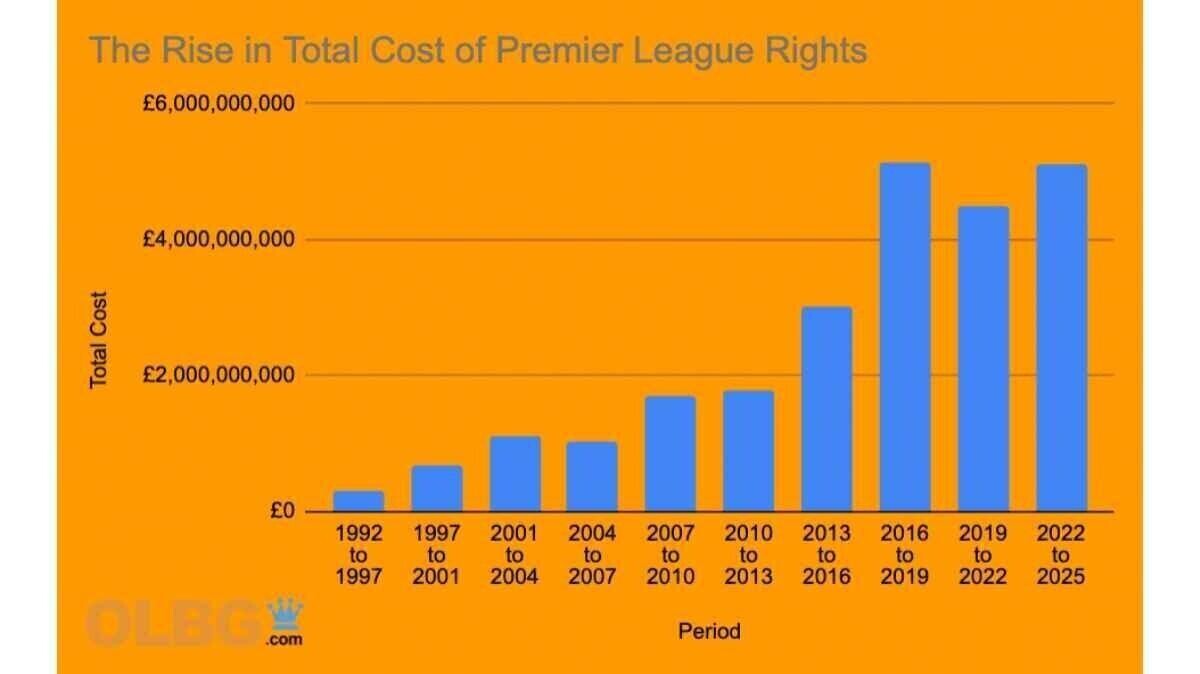
A stance that is unlikely to have changed when the next rights cycle comes up for tender. Admittedly, Amazon may want a bit more of the pie next time around, but their Prime Video service is hardly booming right now and although they have deep pockets, are they going to be deep enough.
While there is always talk of the likes of Facebook, Apple and/or Netflix attempting to join the party. You get the feeling that the Premier League would love to invite them to proceedings, but their invite seemingly gets lost in the post.
Dan Tracey - OLBG Data Scientist
The Premier League are not willing to take anything less than £5bn when it comes to the overall deal value from 2025 onwards. The broadcasters know that the cost per game needs to come down substantially and the only way to achieve this is to receive more for their outlay.
It is no secret that we are in a cost of living crisis and additional subscriptions are on the chopping block right now. If there are fewer subscribers for Sky and Amazon to beam the Premier League into, it becomes even less of a viable long-term arrangement for the broadcasters involved.
Therefore, an increase to 260 matches per season would not only keep the overall revenue at around £5bn for the rights cycle but also means that the media moguls are not paying through the nose – or at least they do not believe they are.
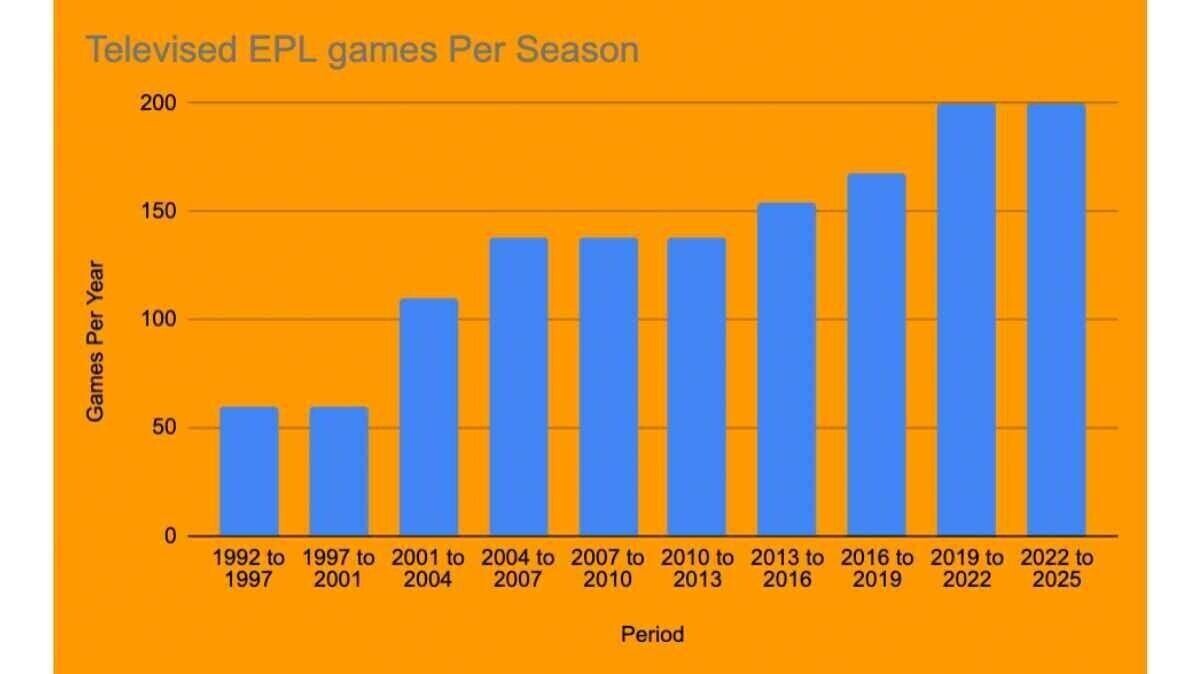
In addition to this, it also goes some way to circumnavigating the 3 pm blackout that was mentioned previously. Instead of having to try and screen matches in this lock-jammed window, you show the majority of matches outside of it.
If 260 games are being shown per season, this averages out at approximately seven per match week and therefore, only three would be shown in the traditional 3pm kickoff slot. All but making it a part of football’s past.
This scenario sees the Premier League having to give up more to get the same money at best but what if they had an ace up their sleeve? What if they cut out the middleman and operated their network instead?
Something in the same vein as the NFL Network or a ‘Premflix’ if you will. If the Premier League is aware the rights revenues are starting to plateau or at worst, decrease, why not simplify the procedure by showing the fixtures in-house?
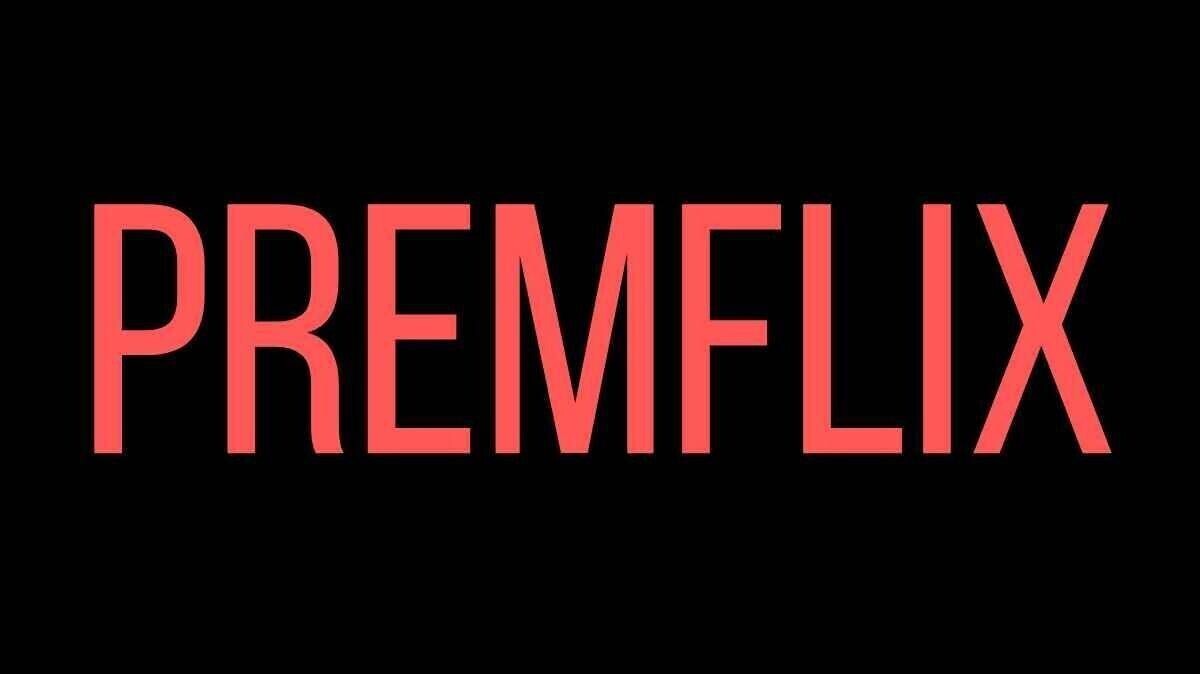
Picture a scene where UK-based fans can watch any of the 380 games per season for a monthly subscription fee. Not on a per-match basis like the ill-fated PPV attempts during covid where it cost £14.99 for 90 minutes action, instead it would be £14.99 for 30 days.
Change the price point to £20, and we are down to 7m annual subscribers. Even if we went as high as £50 a month, the number of subscribers would be 2.83m. £50 may sound a lot, but the money spent here could be saved when saying goodbye to Sky and the like.
A substantial number of football fans only have Sky and/or BT because of the Premier League. They may watch rugby or cricket from time to time but ultimately, they watch it because it is there as a by-product of their desire.
If that same desire were just under one platform, the need for multiple subscriptions would soon dissipate. The £50 price point may not be the golden balance, but it is not an impossible cost either.
In one foul swoop, the Premier League would rid itself of piracy and end the 3pm blackout once and for all. Not only that, but the sums involved are just on a UK-wide level, we have not even scratched the surface when it comes to all the international deals.
This revolution may not come around in the next rights cycle, if only because of the time needed to implement such infrastructure but with the media giants constantly feeling the pinch themselves, this revolution may eventually be streamed in the end.
